Colorado trip for Private Car ride: Part 1
Mendota, IL, to La Junta, CO, Sept. 21-22, 2010
Photos by Dave Ingles
| The 2010 annual gathering of AAPRCO, the American Association of
Private Railroad Car Owners, was held in Alamosa, Colo., and then
Pueblo, with the Amtrak special train running from Albuquerque,
N.Mex., to Walsenburg, Colo., on BNSF, then to Alamosa, Colo., and
environs on the San Luis & Rio Grande, one of the Iowa Pacific
Holdings carriers, in which private car owner (car Caritas) and
convention chairman Clark Johnson is a principal. After touring the
SLRG and a day on the Cumbres & Toltec Scenic, the special moved on
to Pueblo, site of meetings and the banquet (in the restored Union
Station main hall).
For rare-mileage collectors, the route back to Albuquerque from Pueblo to conclude the activities was of interest, being routed over 236 rare miles of former Santa Fe, from Las Animas Jct., Colo., on the Southwest Chief route, due south to Amarillo. This line was a lonely branch, built very late (finished in the 1930's), though it hosted a mixed train right up until Amtrak's inception. Today it is a busy, heavy-duty line, being host to southbound loaded Powder Rive Basin coal trains bound for Texas points, paired in "directional running" with the Fort Worth & Denver/Colorado & Southern hosting the northbound empties from Amarillo through Trinidad, Colo., to Pueblo. The Boise City Sub, as it's called for its Oklahoma town, is not signaled but is very well maintained. On Sept. 21, Phil Moser and I rode Amtrak's Southwest Chief from Illinois to La Junta, Colo., where Phil had a one-way rental car reserved to get us to Pueblo; Phil boarded in Naperville, and I drove to Mendota, Ill., to avoid the hassle of changing trains in Chicago, especially on the return trip. During the night, friend John Arbuckle of Hutchinson, Kans., who makes his living as Amtrak's station agent in Newton, Kans., joined us. |
| With the westbound Chief #3 due out of Mendota at 4:39 p.m., I drove south in late morning, and spent my allotted extra time in the Mendota area. My first photo subject was at Earlville, Ill., of the eastbound Chief #4, at 2:04 p.m., engines 12 and 82 with 9 cars. The depot is local HQ for BNSF signal maintainers. |
 |
 |
| Just west of the Earlville depot is the diamond crossing of that rarity, a rural Union Pacific branch line, formerly Chicago & North Western's branch from De Kalb, on the east-west main line, to Spring Valley, a onetime Rock Island connection. Long since cut back to Troy Grove, where silica sand pits produce a lot of business (there is also a big elevator at Triumph, Ill., the next-to-last station), the Troy Grove Sub hosts a local out of West Chicago five days a week. This is the UP's northbound home signal. |  |
| While driving south on I-39, i'd heard the UP branchline job get a
track warrant DeKalb, which is why I figured I had time to hang out
around Earlville and get him. Sure enough, he showed up a bit after 2:30, with UPY-series GP15's 709/720/713 and 46 cars. In the past I've heard him have to call the BNSF dispatcher for the home signal at Earlville, but this time the UP guy just slowed down, paused briefly, and was given the signal without asking. |
 |
| I positioned myself on the east side at the diamond in order to make a fast exit to the old highway (US 34 once upon a time, now south of town) thru Earlville so I could try to get the "drive in movie shot" near today's US 34, the one photo we missed when Mike Schafer, Mike McBride and I chased this train right after the 1996 merger when it still had C&NW diesels. The Route 34 drive-in is still active, obviously. My prime shots here are slides. |
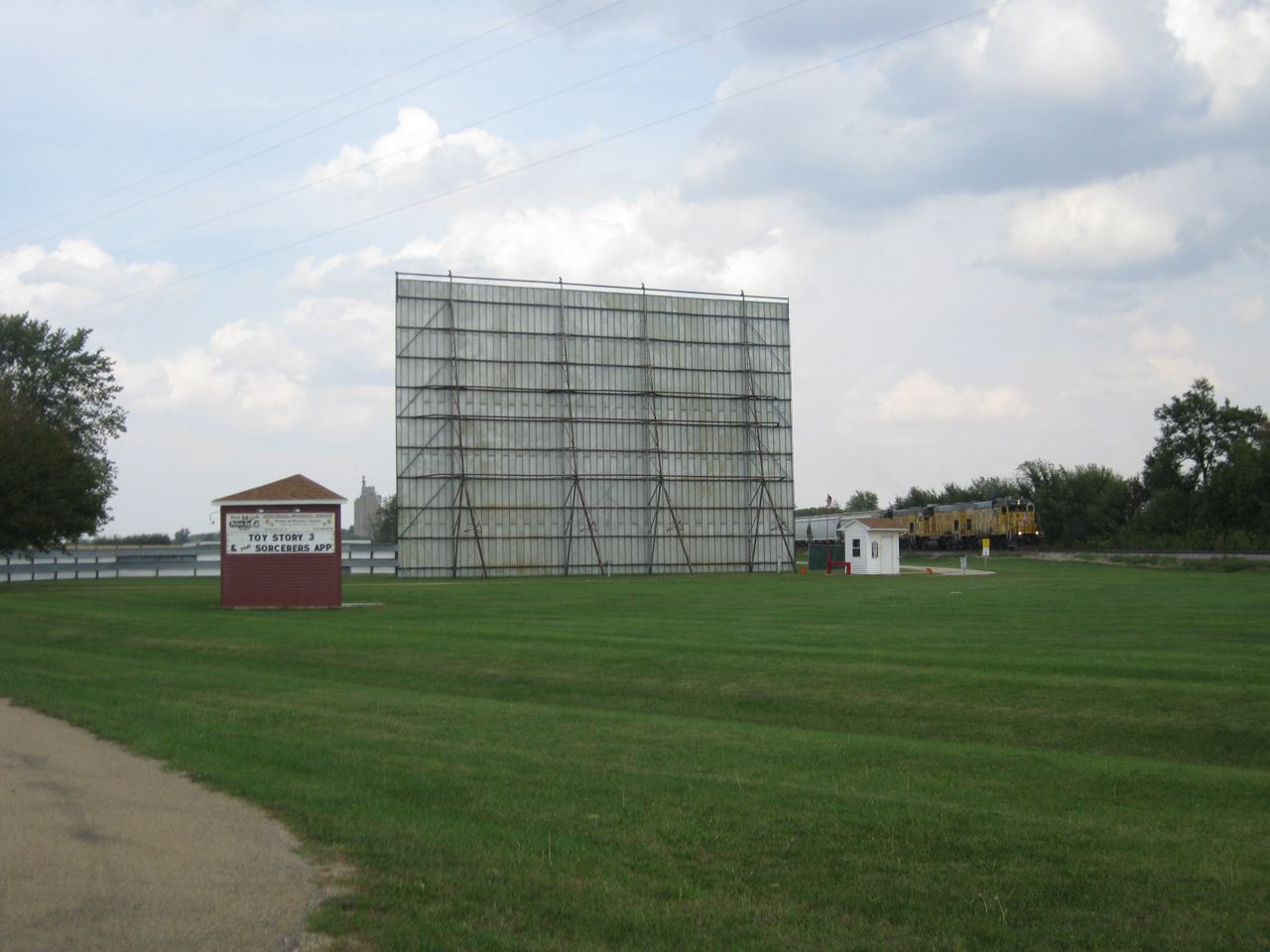 |
 |
 |
 |
 |
| Mid-afternoon on BNSF's Mendota Sub is usually the province of just the four Amtrak long-distance trains (two Zephyrs, two Chiefs), i.e., kind of quiet, allowing a reflective shot like this. The searchlight signals are going down this year, so will the multi-arm trackside pole line wait long to follow into oblivion? Autumn, indeed. |
 |
| Tri-light signals already in place. |
 |
| We are at MP 75, just west of Earlville, here looking east. |
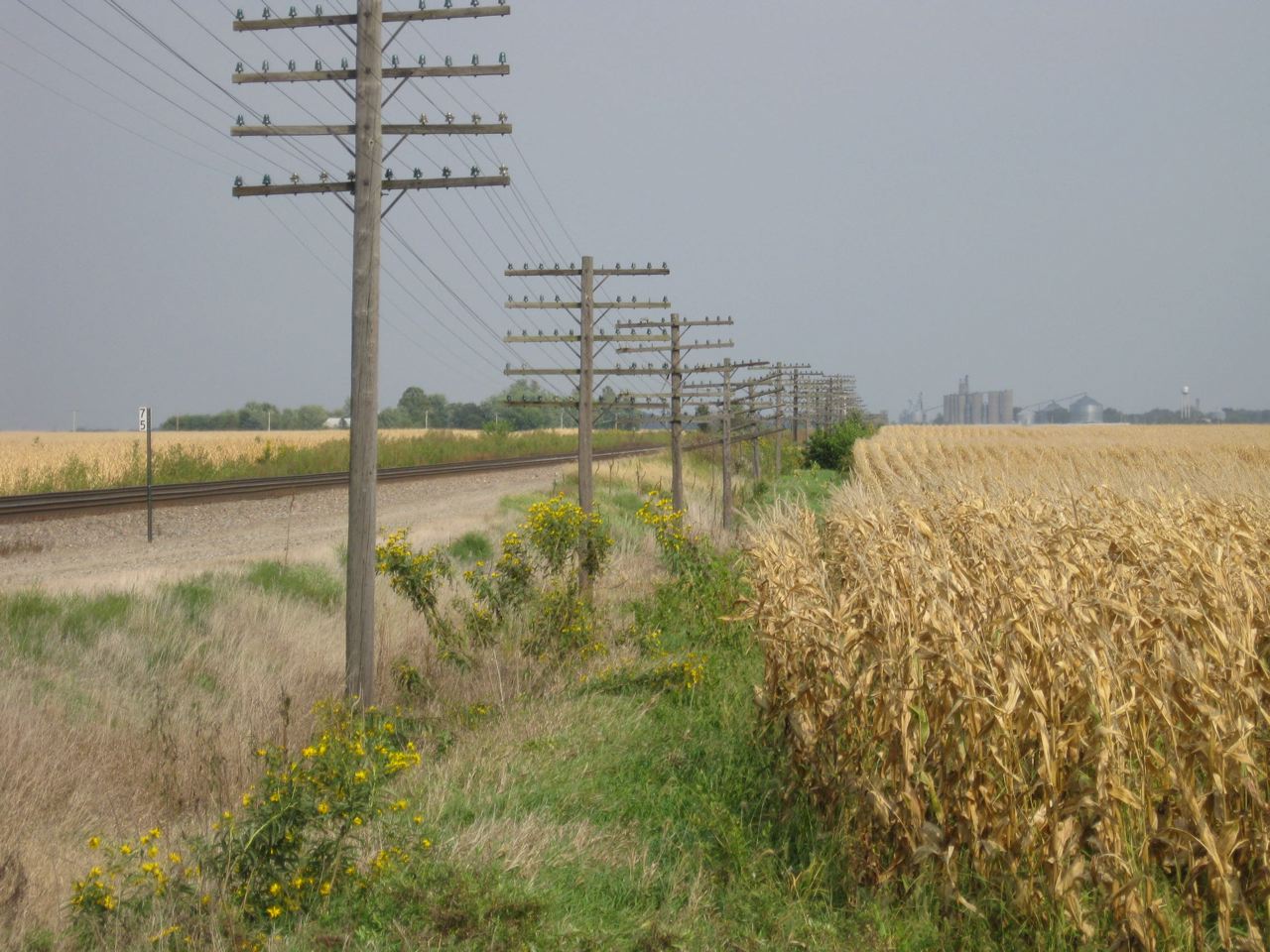 |
| The westbound California Zephyr approaches Meriden at 3:18 pm, engines 117/179 and 10 cars. Tri-lights already up here, too, but not in use yet. |
 |
| That's the I-39 bridge in the distance, halfway between Meriden and Mendota. |
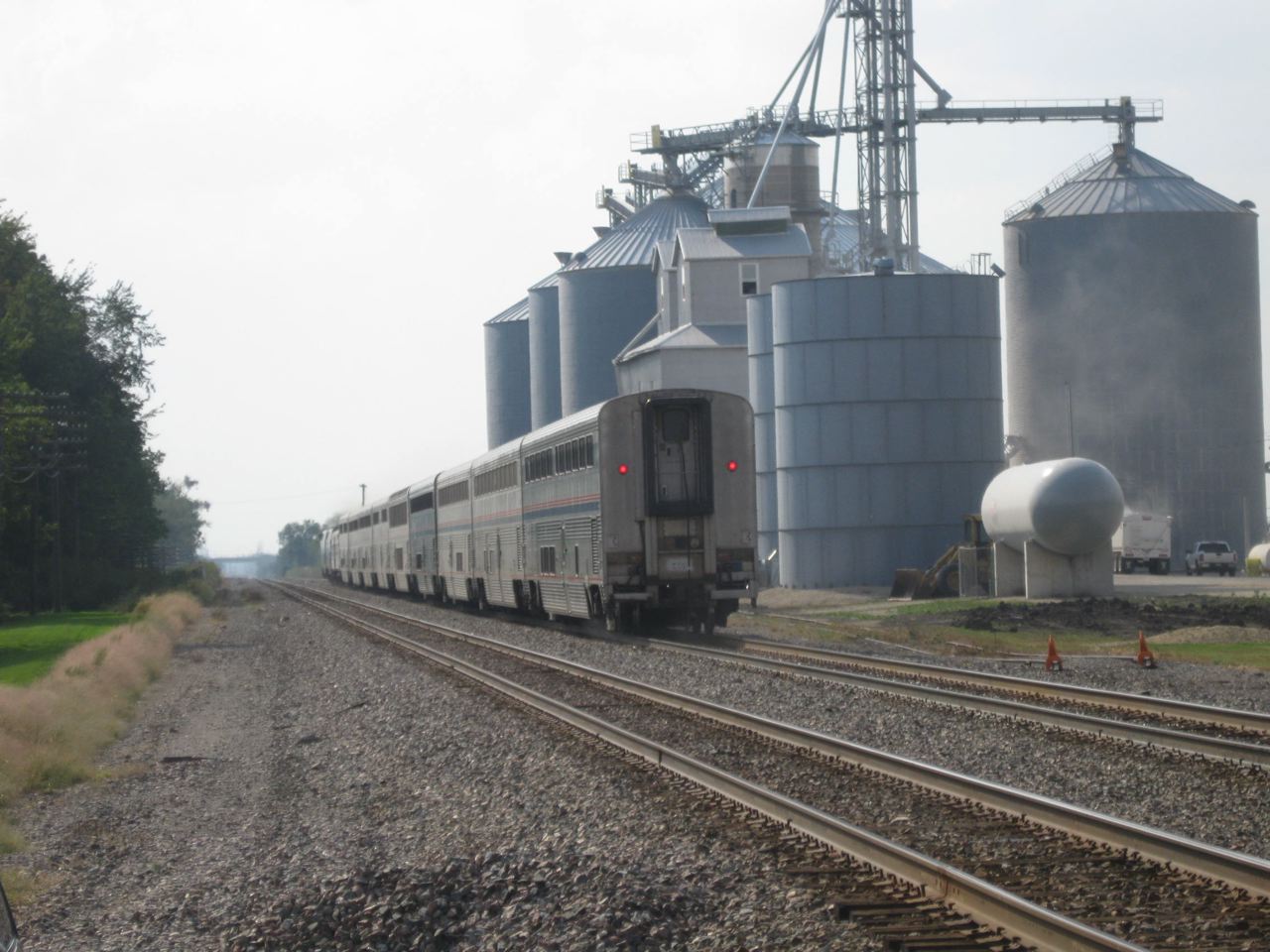 |
| The eastbound Zephyr, on track 1, passes a staged (parked) loaded coal train, east of Meriden at 3:27 pm. Amtrak has engines 95/118 and 10 cars; the coal train has engines 6297/8807 on the point, no DPU. |
 |
| In Mendota, the new signal gantry at 1st Avenue is being installed. |
 |
| Just to the north on Mendota's northeast side, it's easy to discern the berm that was the right of way of Milwaukee Road's Steward-Ladd branch, just beyond Milwaukee Avenue. |
 |
| Spot on-time, my westbound Chief #3 approaches Mendota station at 4:36 p.m., engines 180 and 43, 9 cars. |
 |
| On board, the weather deteriorated quickly, and thru Kewanee it poured rain. Galesburg was dry, but all evening across Missouri we ran through a lot of stormy weather with alternating hard and mild rain. |
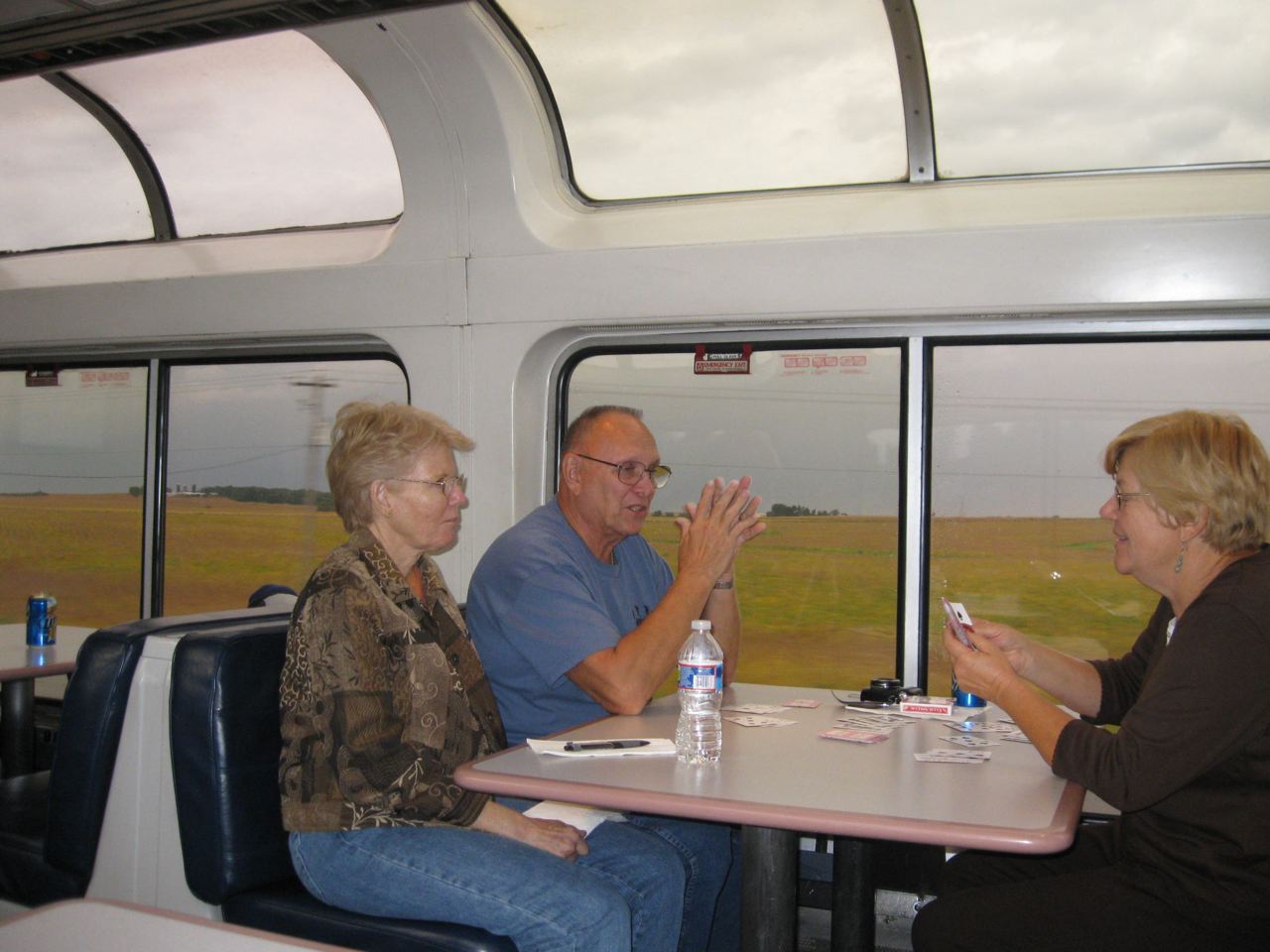 |
| Next morning, Sept. 22, we are pulling into La Junta, on whose east side a Santa Fe grain hopper serves another use for the elevator. |
 |
| We're a bit late, thanks to the slower top speed in western Kansas during the night, but there's always time for a smoke stop at the La Junta crew-change stop, and the train sat there 11 minutes. |
 |
| The new engineer will take the train to Albuquerque. |
 |
| The attendant on our sleeper gestures to one of his passengers. |  |
| Time for #3 to go, and our rental car is here. |
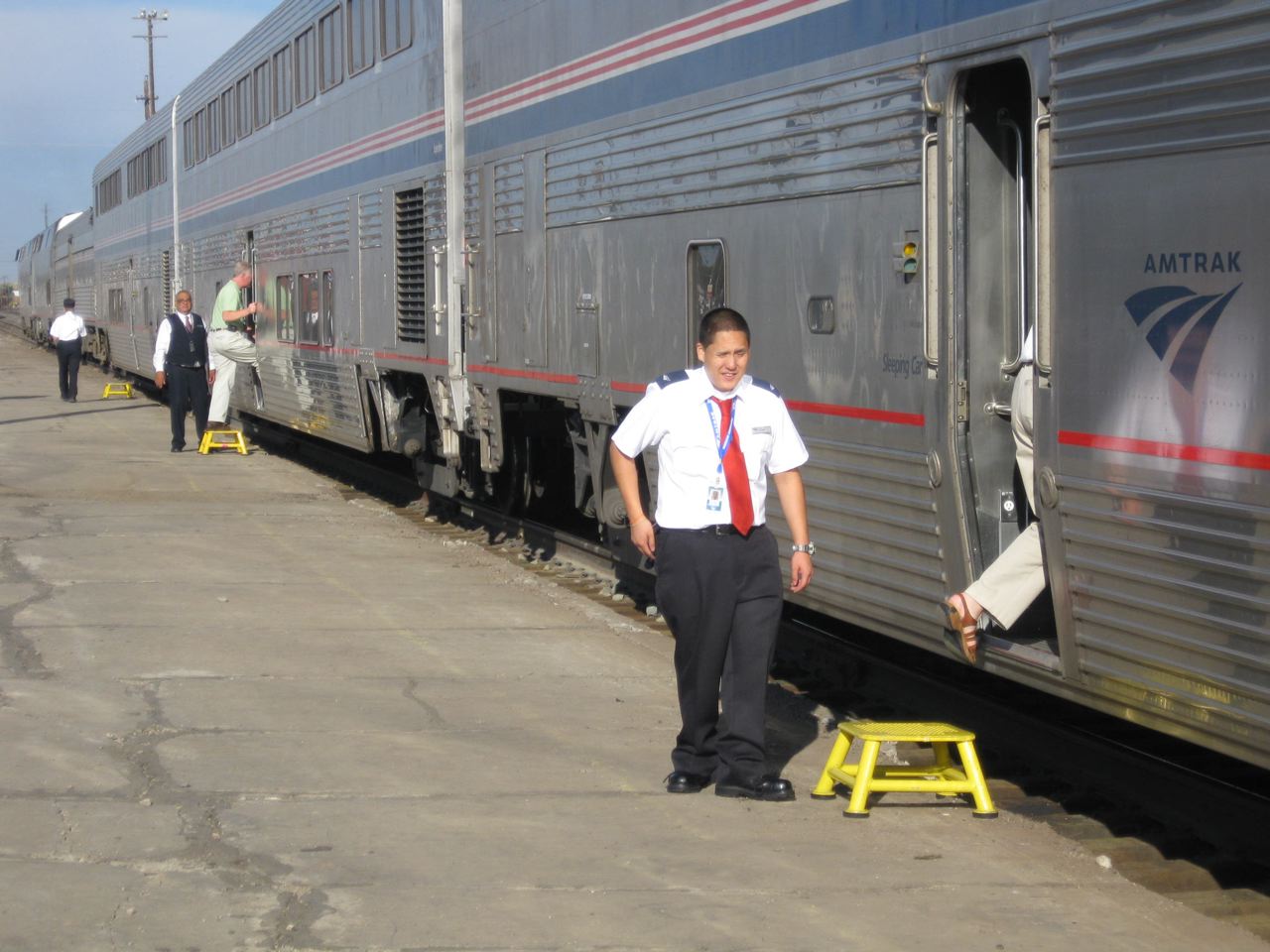 |
| At 8:41 MDT the Chief resumes its trek west. |
 |
This page was designed and is maintained by Mike Condren. If you have materials
that you would like to contribute, contact me at mcondren@cbu.edu